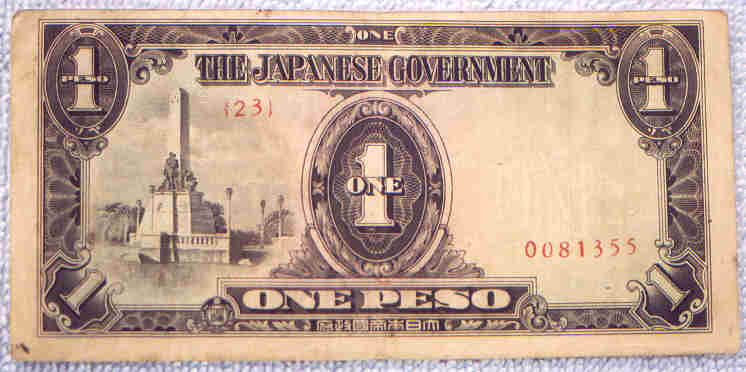Nambu
World: Other Japanese Militaria
This
section shows a small selection of the non-weapon Japanese militaria in my
collection. It also has links to sites on these topics for those who wish to
find out more about flags, banners, medals and lots of other stuff. I have tons
of stuff to add to this section—it will take me years to catch up!
Good Luck Flags

Japanese soldiers often carried a couple of mementoes to bring
them good luck. One was the famous senninbari, or gthousand stitch belth (see
below). The other, perhaps more common, was an autographed hinomaru flag. To find out more about these flags, please click here: Nambu World: Good Luck Flags (Hinomaru
yosegaki)
Senninbari
gThousand Stitch Beltsh:

Japanese
soldiers often carried cloth belts on which female members of their families
had gathered one thousand stitches from passersby. These belts were supposed to
help them return from battle safely. Here is my senninbari.
To
see more photos and read more about these belts, please click here: Nambu World: Senninbari (Thousand Stitch Belts)
Good Luck Charms (O-mamori)
Here
is a selection of good luck charms that have military slogans on them: Nambu
World: O-mamori (Good Luck Charms)
Send-Off Banners
![]()
Japanese
conscripts got marched off to the local train station in parades with great
fanfare. These banners are the ones you see people carrying in these
parades. To see several such
banners and more explanation, please click here: Nambu
World: Japanese Send-Off Banners
Welcome Home/hTriumphant
Returnh (Gaisen)
Items
Of course, the Japanese also held celebrations
to welcome their victorious soldiers home and created items to commemorate
their victories. The term gaisen (gtriumphant
returnh) generally appears on such items. To view a selection from my
collection, please click here: Nambu World: Welcome Back/"Triumphant Return" (Gaisen) Items
Medals:

I
just have a few fairly common medals, but I have translated all the
inscriptions on them in this section, and provided links to more detailed
information.
To
check out the medals section, please click here: Nambu World: Japanese Medals
Japanese Military Bags

The
Japanese military used a variety of cloth drawstring bags: hokobukuro
for service records, kichohinbukuro for valuables and
imonbukuro for gcare packagesh. I have several of
these bags. To find out more, please click here: Japanese
Military Bags
Japanese Military Sake Cups
and Bottles

Sake, or grice wineh, is an
indispensable part of Japanese culture. Many military sake cups and bottles
were commissioned. They are a fascinating and still relatively inexpensive form
of militaria to collect. To see my small collection and find out more, please
click here: Japanese Military Sake
Cups and Bottles
Japanese Currency &
Invasion Scrip:

Japanese
troops had to get paid, and wherever the Japanese took over, they issued
invasion scrip for use in the local economy. To see some examples of Japanese
WWII era currency and invasion scrip, please click here: Japanese
Currency & Invasion Scrip
Marksmanship Related Items
This section includes a variety of items
related to marksmanship and marksmanship training, including badges, record
books, certificates, manuals, etc.
Nambu
World: Marksmanship Related Items
Miscellaneous Japanese
Militaria
Here
are some other miscellaneous items like field manuals, stuff from paramilitary
organizations, etc. To see this potpourri, please click here: Nambu
World: Miscellaneous Japanese Militaria
Books:
There
are lots of books on Japanese militaria, and several are covered in the
sections above. Ifll just post a few of the other things I think are the best
here.
One
exceptional recent book is this one by Mike Hewitt entitled Uniforms and Equipment of the Imperial
Japanese Army in World War II. This amazing book has colour
photographs of every conceivable type of gear along with black and white period
photos of it being used or worn by Japanese troops. Whatfs even more astounding
is that everything shown is in this one manfs collection! (except for a pair of
skis). The publisher is Schiffer.

Another
standard reference work is in Japanese, but has an English insert that
translates the captions. It is Dai Nippon
Teikoku Rikukaigun Gunso to
Sobi by Nakata, which bears the English title Imperial
Japanese Army and Navy Uniforms and Equipments [sic]. It has a lot of photos of original
artifacts.

Another
useful reference is a Japanese-English, English-Japanese Military Dictionary.
Here is the one I have: It is a 1942 reprint of a pre-war dictionary. I got it
from Abe Books, an on-line clearing house for second-hand book dealers. Unfortunately it is surprisingly light on firearms
terminology.

Last updated: June 9, 2009. All contents are
copyright Teri unless otherwise specified and may not be used elsewhere in any
form without prior permission.
Click here to go back to the main page: Nambu World: Terifs WWII Japanese Handgun Website